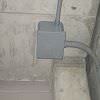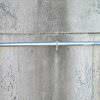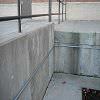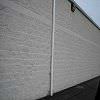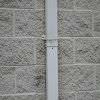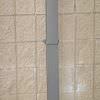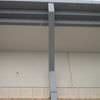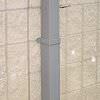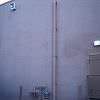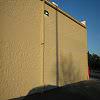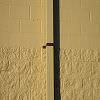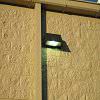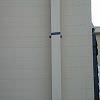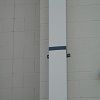Tapcon Screws in Brick
The Tapcon concrete screw is suitable for use in a variety of base material, including brick and the mortar joints between the brick. The holding values of the Tapcon in brick depends on the brick itself and the quality and quantity of mortar in the joint...
Drilling into Brick for Use with Tapcons
When drilling holes into brick for tapcon concrete screws, the holes must be drilled with a hammer type drill. Hammer drills break up the base material. The rotation of the drill pulls the material out of the hole. A carbide tipped bit meeting ANSI standards must be used to ensure proper hole tolerance because hole tolerance when using tapcons is critical. The number of holes that can be drilled with one drill bit depends on a number of factors:
- Abrasiveness of the brick
- Depth of the hole, i.e. the deeper the hole, the lesser number of holes that can be drilled
- The type of hammer drill, make and model, which has a huge impact on the project
- Operator technique or the amount of pressure exerted on the drill during the drilling process. Most hammer drills need very little pressure for the drill to operate at its most efficient speed.
Diameter of Tapcon Screw – tapcons come in two diameters 3/16” and 1/4”. The diameter to use in any application depends on the weight of the item being fastened, the diameter of the hole in the fixture or a recommendation from an engineer.
Hole Diameter - the hole to be drilled into the brick must be the corresponding diameter to the diameter of tapcon being used. A 3/16” tapcon into brick needs a 5/32” hole and a 1/4” tapcon into brick needs a 3/16” hole. It is critically important that an ANSI standard bit is used in order to ensure proper hole tolerance between hole size and tapcon diameter.
Depth of Hole - the hole in the brick must be drilled a minimum of 1/2” deeper than the tapcon screw will penetrate. This will allow space for any of the brick dust created during the drilling process to fall.
Embedment Depth - tapcons need to be embedded into the brick a minimum distance for the tapcon to have minimum holding values. Both diameters require that the tapcon screws be embedded into the brick a minimum of 1”. Tapcons into brick also have a maximum embedment depth of 1-3/4” and, because brick is an abrasive material, maximum embedment depth is very unlikely to be obtained.
Head Style - two head styles are available for tapcon screws used in brick. The hex head, which is a hex slotted washer head, is used for applications in which the head of the tapcon is above the surface of the fixture being fastened. The hex headed tapcon for brick requires a different size hex driver for each diameter. The 3/16” diameter requires a 1/4” hex driver and the 1/4” requires a 5/16” hex driver. The flat head, which is a flat countersunk Phillips, is used for applications where the head of the tapcon is flush with the surface of the material being fastened. The size of the Phillips driver is different for both diameters: the 3/16” requires a #2 Phillips and the 1/4” requires a #3 Phillips.
Installing Tapcon Screws into Brick
- Drill a hole into the brick or the mortar joint using a hammer drill with a carbide drill bit that meets ANSI standards and is the correct diameter of the tapcon being installed.
- Drill hole a minimum of 1/2” deeper into the brick or mortar joint than the tapcon screw will penetrate.
- Using a wire brush, compressed air or vacuum, clean the hole of all brick dust created during the drilling process.
- Insert correct length tapcon through the fixture and into the hole in the brick.
- Turn tapcon clockwise until the head of the tapcon is tight against the material being fastened. Make sure the tapcon is not over-torqued.
For more information, please watch this video on Tapcon screws: How to Install Tapcons
CONFAST® Screws
Tapcon® Screws
Recent Posts
-
Best Masonry Anchors
Get the job done right the first time by using the best masonry anchors for the application. A mason …Nov 24th 2020 -
Best Cinder Block Fasteners
Fastening to Cinder Block Cinder block …Jun 16th 2020 -
Best Brick Anchors
Male or Female Anchor? Female anchors would require the spotting of the anchor and then place th …Feb 21st 2019


